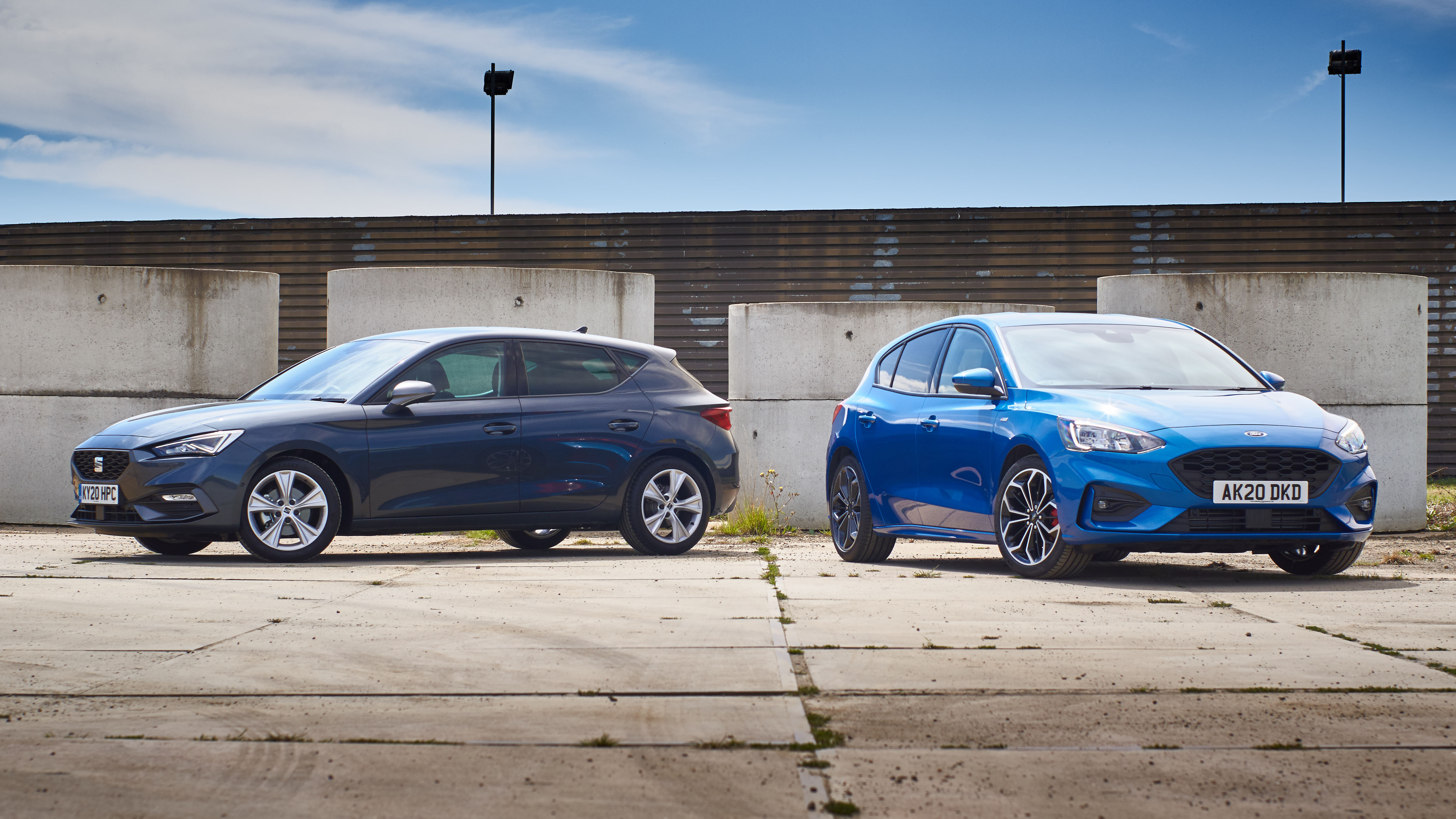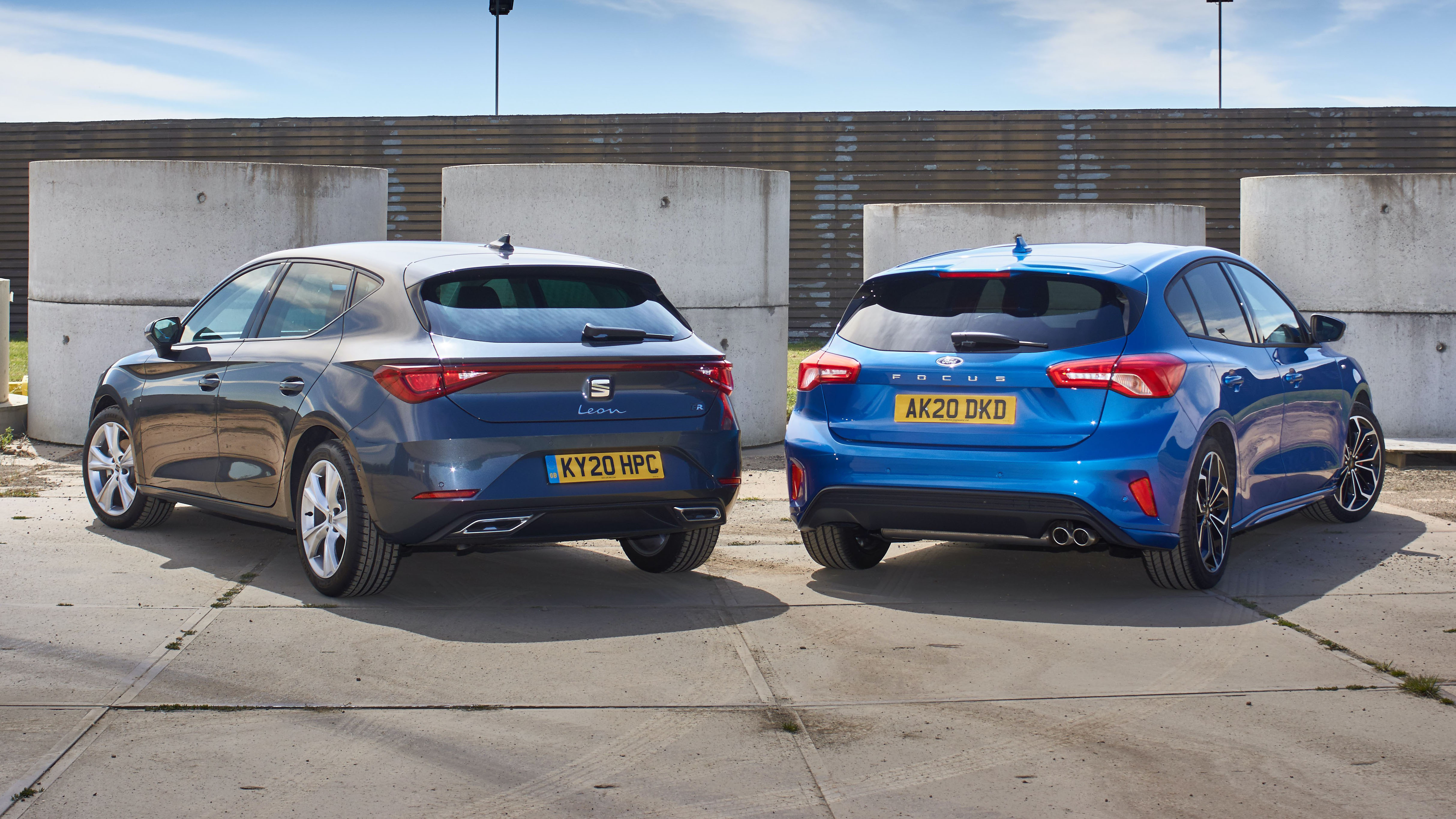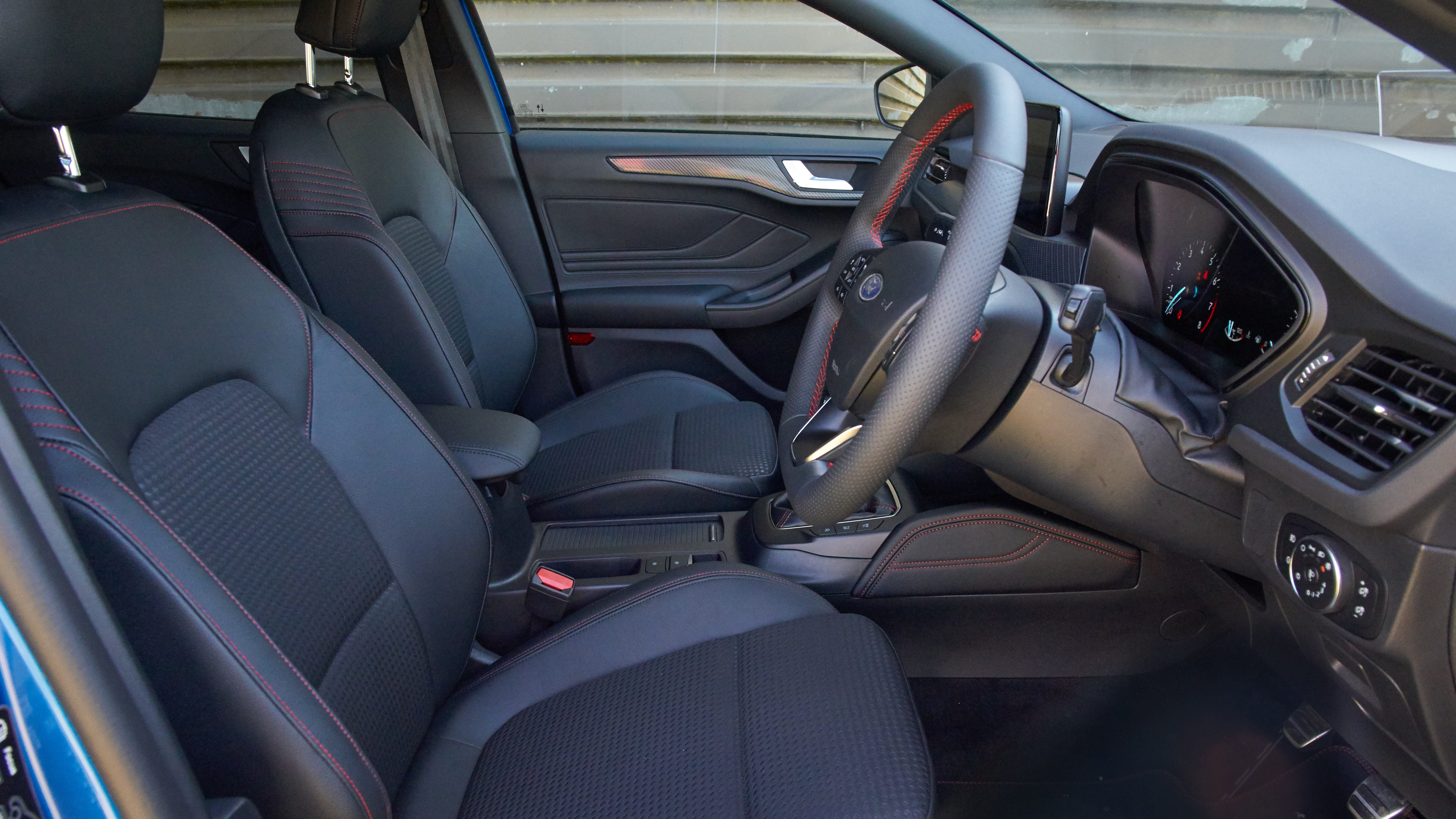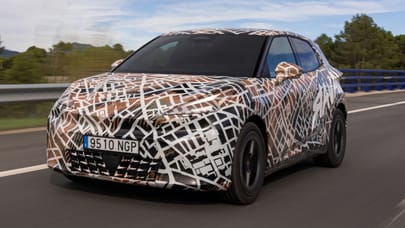
Twin test: Ford Focus vs Seat Leon
Who wins in the War Of The Ordinary But Really Quite Good Hatchbacks?
This is where you get lucky. You might be given one of these by your job, borrow it from your parents or rent on holiday. They're perfectly ordinary, and no-one who's not in the know will notice – let alone admire – you. They're just, y'know, cars.
How come lucky? Because they're brilliant, and you'll be smiling inside.
They prove there's scant reason to lash out extra for the so-called prestige of a BMW 1 Series or Mercedes A-Class. Nor for the fashion-forward crossovers like a T-Roc or C-HR.
The Focus is here in ST-Line X trim, which gives you a body kit and stiffened suspension and 18-inch wheels, which all looks good. Probably for price parity it should have been the non-X version, and lost a bit of kit and dropped one wheel size. The Seat is an FR, which also means semi-sporty. It's the best-seller in its range.
These certainly aren't performance machines… the Focus has a 1.0-litre petrol triple making 125bhp, the Seat a 1.5 four-cylinder doing 130bhp.
The Seat's engine trick is light-throttle cylinder deactivation to conserve fuel. The Ford (unusually for a triple) does the same. Ford is on the point of adding a mild-hybrid system too. But the test car was the last of the old build and didn't quite have it.
Other than that they're mechanically conventional. Ford and Seat each have engine-power thresholds above which torsion-beam rear suspension is swapped out for more sophisticated multi-link. But both these versions fall short.
Still, they let you have a good time through an interesting road, in a way that even cars that label themselves 'sporty' don't always do. They're agile and fluent. The Focus lets you alter its fulcrum through a bend just by what you do to the throttle – a mild effect but well fun because it's well telegraphed. The Seat is more straight-laced. But they both flatter your inputs with satisfying outputs.
(An aside. I had wrongly thought this spec of Focus would get the more sophisticated multi-link rear end. Then I paste it down a nice road. It doesn't have the steering immediacy and precision I was expecting, though it's still as sharp as the Seat. Stop and peer underneath, and find a torsion beam. There you are, a triumph of Top Gear's road-testing experience over confirmation bias.)
The Focus rounds off bumps decently, though it's still firmly sprung for a boggo hatch. Slightly firmer than the Seat. But the Ford acts like it has less friction in its dampers, so it feels plusher at town speed. It's the same with gearshifts: the Ford's seems more expensive and oiled, the Seat's slightly cruder.
Top Gear
Newsletter
Thank you for subscribing to our newsletter. Look out for your regular round-up of news, reviews and offers in your inbox.
Get all the latest news, reviews and exclusives, direct to your inbox.
The Focus's little engine has more even and eager reactions at low speed than the Seat's. But once they get going they're both refined off throttle and willing on it. They're not fast, but they don't mind giving their best. OK this particular Focus was very new and didn't much want to rev, but we know the engine from elsewhere and it's fine.
A Focus looks curiously over-bodied when you see a basic Zetec on small wheels, but this test car has good stance. Its lines and surfaces are extravagantly worked. The Seat's are a subtler version of the same design idiom. By the standards of normcore hatchbacks, both are capable of looking dull or striking. Just depends on the colour of their paint, the amount of road grime they're carrying, and the sunniness of the weather.
Inside they have a mild slathering of GTI-isms. You know the drill: bolstered seats, contrast stitching, grippy steering wheels, garnishes of fake carbon fibre or fake aluminium. They're also family-roomy, especially the Leon which has a Golf platform but extended in the wheelbase, to the benefit of back-seat riders' legs.
The Leon's cabin is the less ordinary. Of the pair it's the one you'd use to show off you're in a new – and newly designed – car. The vents emerge from the dash in the sort of hexagonal morphology you'd find in a Lamborghini. The lines are razor-sharp. The whole assembly looks better to every pair of eyes we asked, and it's made of a more expensive-feeling and more visually cohesive set of plastics than the Ford is.
Most of all for the Leon it's about the screens. They're high in resolution and quick in response and comprehensive in function.
But they're insanely hard to use on the move. OK there are shortcuts to the climate functions and the hi-fi. But a shortcut to a menu isn't as good as a comprehensive set of knobs and buttons that, once you're familiar, you can reach by fingertip feel alone.
That's what the Focus has. For climate, stereo, and lights. The Ford's infotainment doesn't have the flashy graphics of the Seat, it doesn't think the volume knob needed reinventing, but it covers all the same significant functions. There's an optional HUD that doesn't cost much and, in harmony with the Focus's clear hardware clocks, keeps you as well-informed as the Seat's fussy reconfigurable TFT screen.
It's as if Seat employed social-media interface designers who aimed to make it 'sticky' and keep you engaged. The Ford's dash feels like it came from people who drive cars, and helps you get your eyes back on the road asap.
Finally, costs. Buying these two on finance depends on the rate of interest and deposit contribution you can find, rather than on their upfront price or residuals as these are pretty close.
The Seat gave us the sort of economy (late-40s mpg) we'd have got just a decade ago from a diesel of similar performance in a similar-sized car driven in a similar manner. The Ford wasn't so good, but on the other hand it was absolutely factory fresh and the engine felt tight. Plus no hybrid system. We're getting mid-40s out of a long-term-test Puma with a hybridised triple.
Anyway, however brilliant these two ordinary cars are, we can pick one from the other without much hesitation. That's the Focus. It's a bit more fun, and its dash is a lot less annoying. We'll just have to pass on the Seat's flash-dash showroom appeal and "Audi's diffusion range" soundbyte.
Trending this week
- Car Review
BMW iX3










